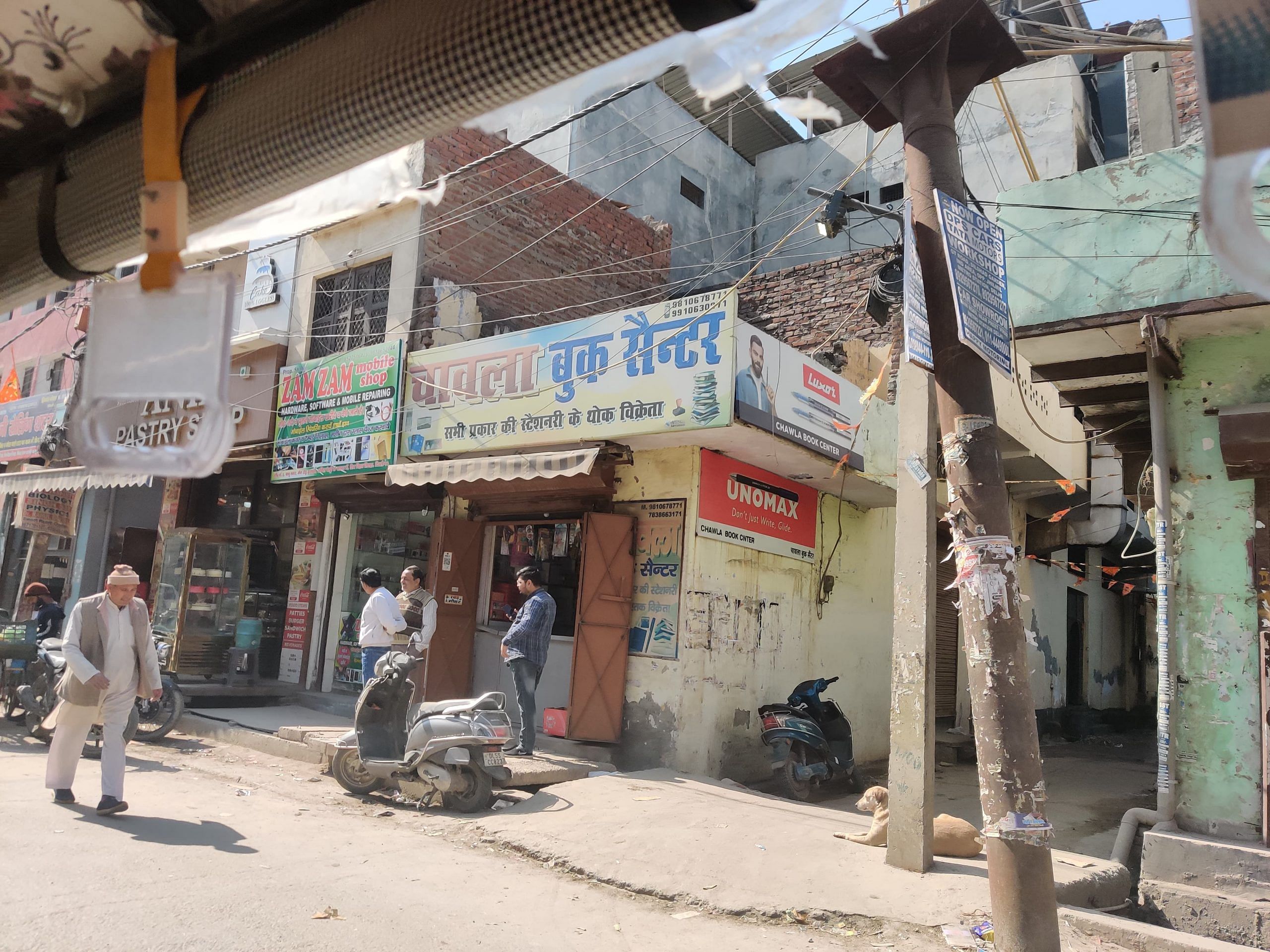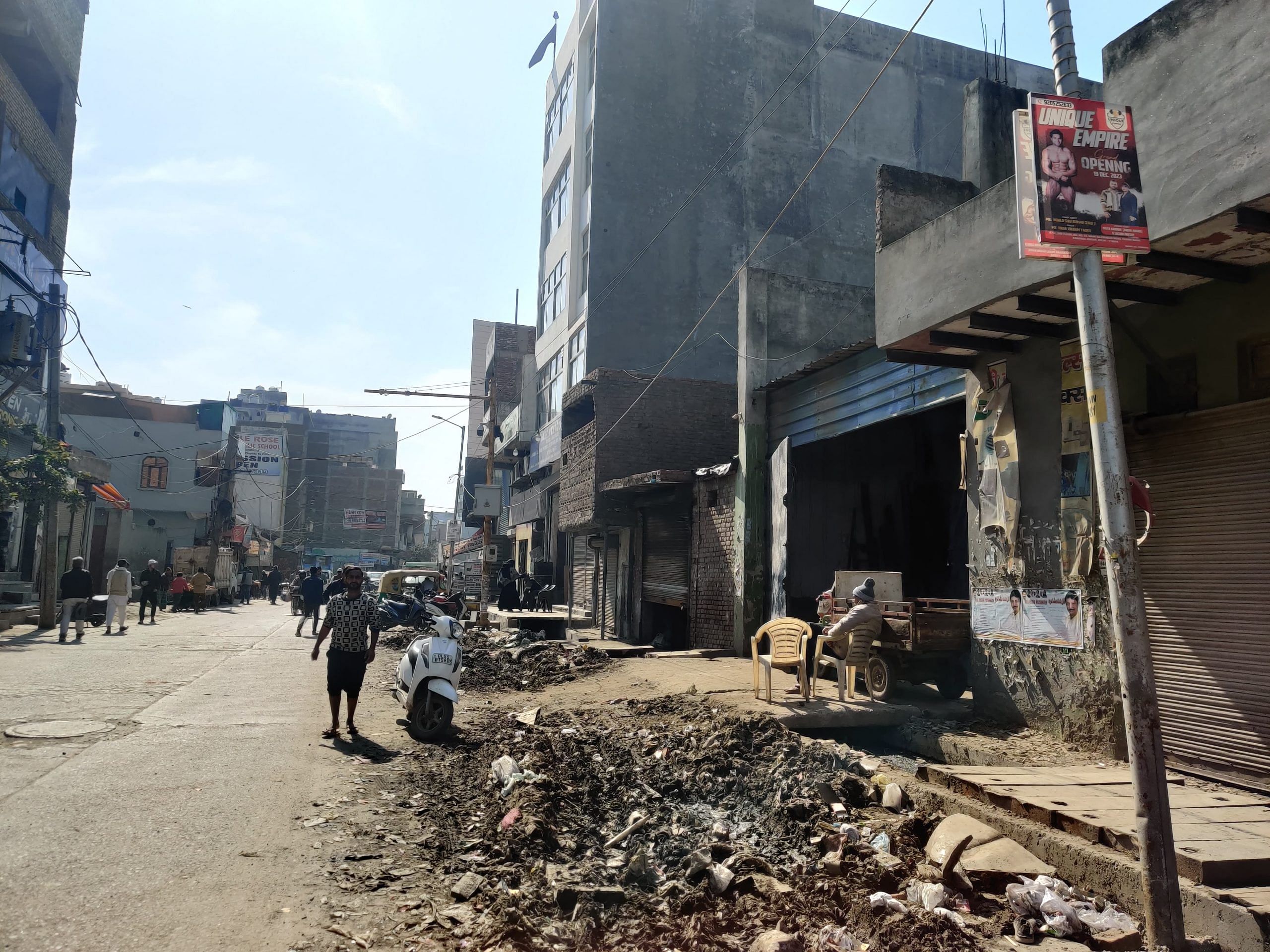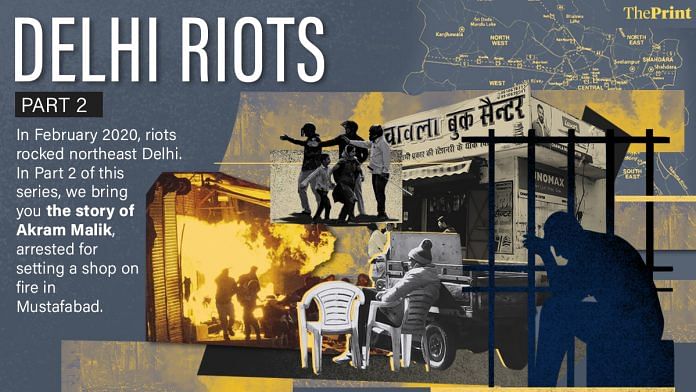New Delhi: It’s 12.30 pm on a cold February day. In the bylanes of Delhi’s Old Mustafabad, Akram Malik, 30, is sitting outside his scrap shop, recording some figures in a receipt book. It’s been a busy Thursday morning, Akram, dressed in a white bomber jacket and white sneakers, tells ThePrint.
The receipt book he holds has been purchased at Chawla Book Centre, a stationery shop some 200 metres away. Inside, its owner, Gulshan Kumar, is attending to some customers.
On 23 January, a Delhi court acquitted Akram and two other people — Mohd Furkan and Mohd Irshad — of rioting and criminal conspiracy, among other charges, in a case stemming from the stationery shop being set on fire. The incident occurred as part of the Delhi riots that began on 23 February 2020, and went on for three days, although incidents of rioting and arson continued to be reported until 29 February.
The violence killed 53 people and left scores wounded.
Akram was arrested on the back of an FIR that Gulshan Kumar registered. Although Gulshan Kumar did not name anyone, police arrested Akram based on video footage.

In its acquittal order, the Delhi court said that the prosecution could not prove “beyond reasonable” doubt that Akram and his co-accused set the shop on fire. It’s another instance of courts coming down heavily on the Delhi Police over its “shoddy probe” and “predetermined” charge sheets in the riots probe.
Now back home, Akram finds it hard to talk about his arrest and time in prison. But he says the riots have left an indelible mark on the Hindu-Muslim ties in the area.
“Dangon ke baad hawaye badal gayi hai (After the riots, the winds have changed),” Akram, a father of three, says. “Bhed bhav badh gaya hai, lekin koshish jaari hai ekta ki, aakhir log toh hum ab bhi wohi hai (Discrimination has increased but efforts for unity are ongoing because, ultimately, we are the same people that we were before).”
Also Read: CAA, Delhi riot among ‘triggers’ — Delhi Police find Jahangirpuri ‘conspiracy’ in WhatsApp chats
‘Biggest blunder of my life’
According to data exclusively accessed by ThePrint, Delhi Police registered 757 cases in connection with the 2020 riots. Of these, various courts have acquitted 183 people and discharged another 75, as detailed in the first part of the Delhi riots series.
Data also shows that, of the 2,174 people arrested by Delhi Police in 694 cases, 1,739 are currently out on bail. Likewise, 346 out of 424 people arrested by Delhi Police Crime Branch in connection with 62 cases are on out bail.
Meanwhile, of the 21 people who were arrested by Delhi Police Special Cell in connection with their probe into the “larger conspiracy” of the riots, 12 — including student activist and former JNU research scholar Umar Khalid — are currently in jail.
It was a video of Akram running towards the stationery shop that led to his arrest.
“The police came to my shop and asked me to accompany them to the police station. They arrested me saying that video footage showed me running towards the Chawla bookstore. I had just gone to see what was happening. That was the biggest blunder of my life,” Akram says.

When the police arrived, he assumed they wanted to question him since Mustafabad and the nearby Shiv Vihar Tiraha were among the worst-affected places. What he didn’t know was that he was being placed under arrest.
“Only upon reaching there (the police station), did they inform me that I am an accused in the case based on some footage of me running towards the shop,” the 30-year-old says.
The FIR that Gulshan Kumar registered was dated 4 March — over a fortnight before his arrest on 20 March. At that time, his wife was seven months pregnant, Akram says.
When his daughter was a month old, he was released on parole. He was finally granted bail in March 2021.
There were nights when he lost all hope, he says. “All the accused in riot cases would sit together and discuss how the riots broke out and the damage it caused,” he says. “For the first few weeks, we didn’t have (any other sets of) clothes and I am above 6 feet. So even if I borrowed clothes from others, they wouldn’t fit me completely.”
But the worst was when Akram had to be quarantined after he returned from parole. It was during the first wave of the Covid-19 pandemic.
“You would be locked in an isolated cell and there’s no one to talk to you. It felt like a prison inside the prison,” he says.
Still, Akram counts himself among the lucky ones. Unlike many of those arrested in connection with the Delhi riots — including his co-accused Mohd Furkan and Mohd Irshad — he had only one case against him.
“Most of the others who have been accused have multiple cases against them. I think I got lucky as they booked me only in one case,” he says.
Akram’s arrest hasn’t affected his ties with the Chawla Book Centre. The FIR didn’t name anyone, he explains.
“We know them very well,” Akram says about his neighbours. “All of us have been living in this area for years now. We still buy stationery from their shop.”
‘Artificial’ claim
According to the court’s acquittal order, which ThePrint has seen, Fukran and Irshad were identified by a prosecution witness, constable Pawan Kumar, from a mob of 400-500. The order quoted this witness as saying that the mob was “carrying some combustible substance” and had set the shop on fire.
Akram was arrested after a “secret informer” and another prosecution witness, Amit, a constable present on the spot, identified him as one of the rioters from CCTV footage captured at Shiv Vihar Tiraha, the court order shows.
Akram, according to this witness, was “waving his hands and calling out for other members of the mob” and “throwing a petrol bomb”.
According to the court’s order, while constable Amit had identified Akram on 6 March, he was only arrested on 20 March. The order also casts doubts on the veracity of the witnesses in the case.
“In that situation, on 20.03.2020, there was no occasion for IO to need identification/pointing out to accused Akram by secret informer. This scenario probabilise claim of PW7 (Amit) regarding identifying Akram on 24.02.2020 to be artificial,” the court noted, further saying that it’s “not safe” to rely on the testimonies of either policeman.
The lasting impact
Despite Akram’s acquittal, the Malik family is still shaken by all that has happened. Toushif, Akram’s 75-year-old year-old father, finds it difficult to talk about his son’s arrest. But like his son, he doesn’t hold what happened against the stationery shop owners.
“Why would we do it to someone we have known for years?” he asked. “They didn’t say my son did it so how can we hold it against them? We can only try to move on and pray that this never happens again,” Toushif says.
It’s nearly four years since the riots, and life is now seemingly back to normal. But the scars are yet to heal fully. For Akram, this means living with the knowledge that people perceive him as a rioter despite the court acquittal.
“It can’t be like how it used to be before the riots,” he says. “Everyone is dealing with the aftermath of the violence and limping back to normal life. The tag of a rioter will remain for a while and I am trying my best to live with it.”
These four years have also seen Chawla Book Centre get back on its feet. Gulshan Kumar and his family went away when the riots began in 2020. They came back days later to a changed place.
“We never saw who they were, and we don’t know who actually did it,” Gulshan Kumar tells ThePrint. “It obviously can’t be like it used to be before February 2020. People have lost lives and livelihoods. Those scars don’t go away.”
(Edited by Uttara Ramaswamy)
Also Read: ‘People call us rioters’ — a year after demolitions, fear & stigma still haunt Jahangirpuri’s lanes



